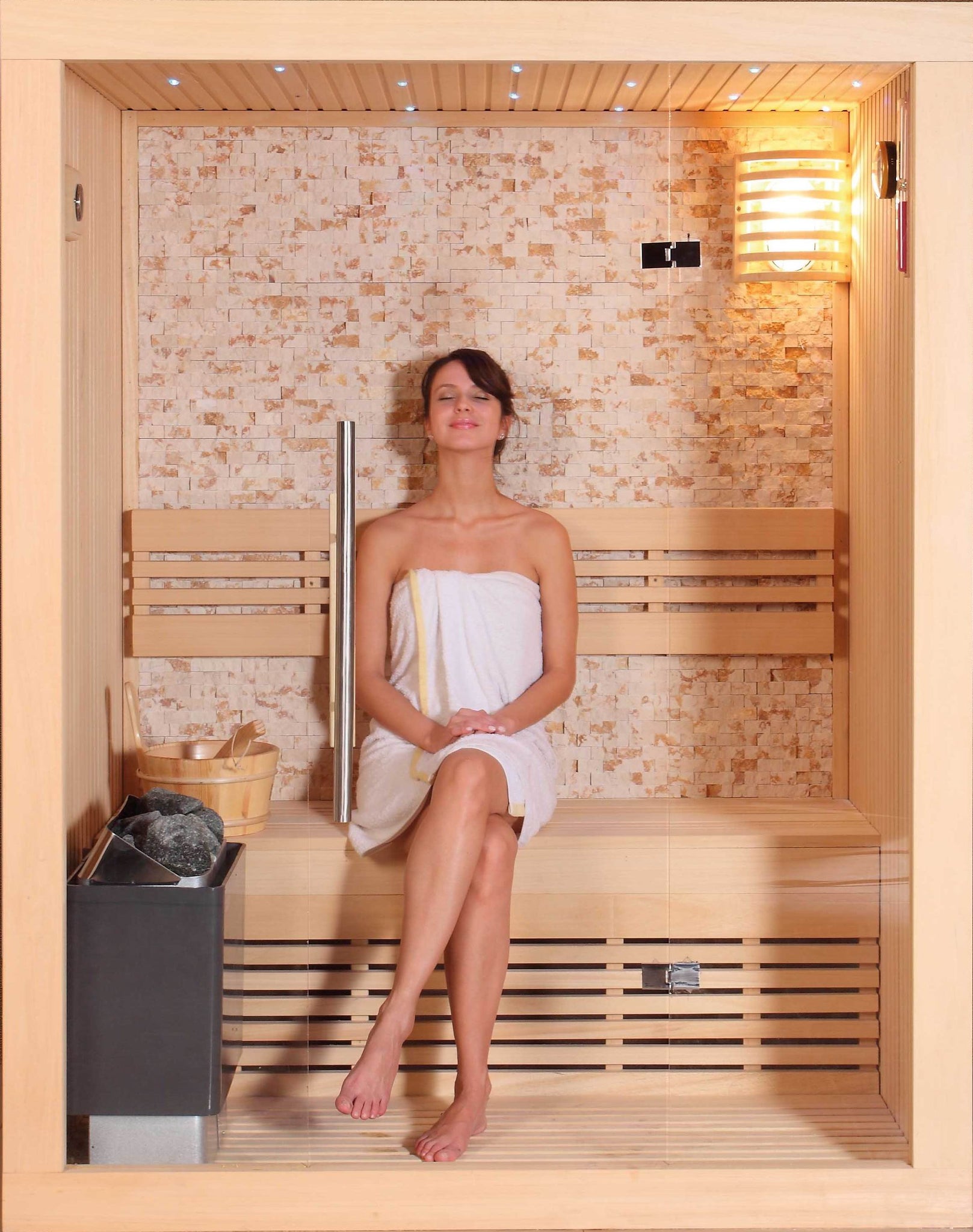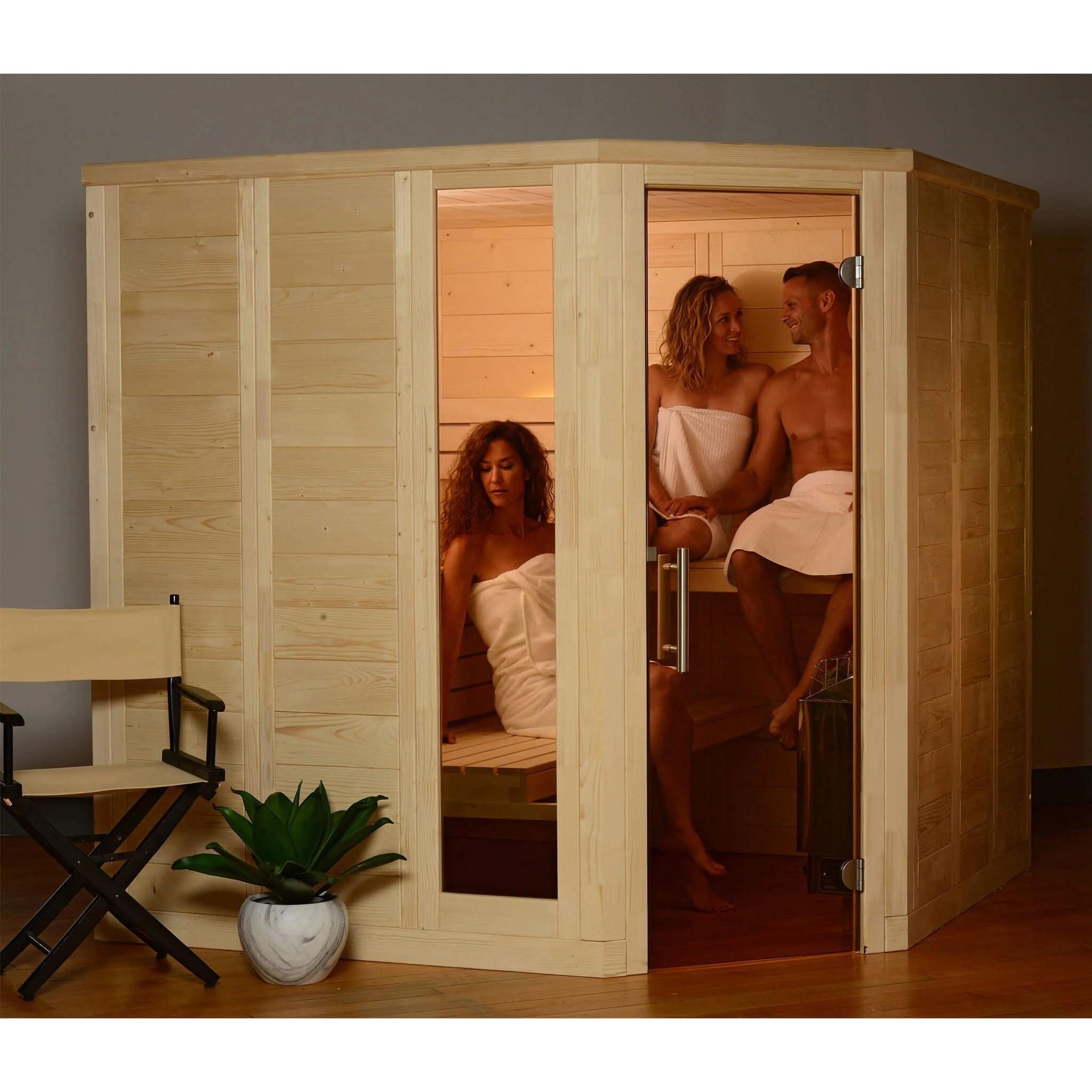Examine This Report about Traditional Sauna
Examine This Report about Traditional Sauna
Blog Article
The Single Strategy To Use For Traditional Sauna
Table of ContentsIndicators on Traditional Sauna You Should KnowAbout Traditional SaunaSome Known Incorrect Statements About Traditional Sauna Some Known Incorrect Statements About Traditional Sauna
Most of the weight lost in a sauna is water loss and is re-gained upon rehydrating. However, undoubtedly sauna can be a fundamental part of a healthy weight reduction program. To take a look at the distinctions between typical and IR saunas, I will certainly separate these into proven, academic, and made distinctions.Hence, the most popular factor in the saunawhich is at the ceiling directly over the sauna heateris generally between 185 and 190 F. Traditional Sauna. Claims that a standard sauna goes beyond 200 F is simply not true and not suitable for electrical saunas sold in the United States. The temperature for a far-infrared sauna is normally set between 120 and 140 F; nonetheless, unlike the standard sauna, the objective in and IR room is not to accomplish a heat
Due to this, the temperature level distinction is practically unnecessary, because excessive sweating causes both sauna types, yet the technique of heating up the body is different. In an IR sauna the bather will really feel warm and will certainly sweat a lot, however at a lot reduced temperature levels. Therefore, if the objective is to invest longer time periods in the sauna, the IR sauna is a great choice.

The Only Guide for Traditional Sauna
When the heat is attained, the elements cycle on and off to keep the high temperature. A lot of typical sauna customers appreciate putting water over the rocks to develop heavy steam to elevate sauna humidity levels. The advantages of pouring water over the rocks include: making the area a lot more comfortable, dampening the nasal passages, and allowing the use of aromatherapy by mixing essential oils with the water.
In a far-infrared sauna, the warm front penetrate the body to properly heat the body and raise the body core temperature level. To attain this boosted temperature, Far-infrared emitters produce infrared energy which is close to the very same wavelength as that which the body normally emitsoften referred to as the "Vital Array" of 7 to 14 microns), so the energy is well received by the body.
When the power enters the body, it causes the body temperature level to increase and inevitably leads to sweat. In an infrared sauna it is essential for the emitters/heaters to continue to be on practically frequently. Considering that there is no mass of rocks to retain warm, the sauna will cool if the emitters shut down.
As mentioned above, the sauna bather in an infrared space desires to position himself before operating emitters to obtain optimal gain from the heat. The home heating time for the two areas can be very different, relying on how the rooms are used. For a standard sauna, a bather should allow 30-40 mins for the space to achieve a preferred temperature and to appropriately pre-heat the rocks.
3 Easy Facts About Traditional Sauna Described
A site web well created sauna will usually attain a temperature of 150-160 F in regarding 30-40 minutes (Traditional Sauna). For hotter temperature levels, the space may require to warm for a longer period. As soon as the room achieves established temperature level, the heating system will cycle on and off, normally running regarding 50% of the moment. The insulated wall surfaces and the warmed rocks will certainly keep the area warm and at secure temperature levels.
To some, 15 mins was "wasted" while the infrared energy heated the timber panels rather than warming a body, while others find a pre-heated area to be more comfortable and think a raised starting temperature is essential to start perspiring. The size of recommended usage for each area is approximately the same (10-15 mins per session); however, as a result of the lower air temperatures and the ability to really feel the impacts of infrared warm much faster than a typical sauna, it is not unusual for an individual to spend a total amount of 20-30 mins in an infrared sauna.
Traditional saunas tend to be larger (therefore use more power) than infrared saunas, although standard saunas are certainly offered in one and 2 individual dimensions. For a two-person traditional sauna, 5x6 or 5x7 size is most popular. The top bench can easily seat two or 3 individuals and is additionally long enough to exist down during the sauna session.


The average expense per kWH of electrical power in the united state is around $0.11, so a 4.5 kW heating system will cost approximately $.50 news to compete one hour, i was reading this if the heating system runs constantly for one hour. Generally a sauna heating system will certainly compete 75% of the very first hour and 50% of subsequent hours on considering that the aspects cycle once the established temperature level is attained.
Indicators on Traditional Sauna You Should Know
A two person far-infrared room is usually literally smaller than a conventional sauna, commonly about 4' x 4' or smaller. The IR heater is typically 1.5-1.7 kW utilizing a 120 volt 15 amp plug-in solution. Considering that the area can be used earlier than a sauna space, we will certainly presume the room is utilized for to of an hour including warm up time.
Lastly, there is a rarely gone over distinction in the social experience between both rooms. While our culture has lost a few of the social benefit of the conventional sauna experience, it can be very socially gratifying. From household time in the sauna, to heart-felt conversations with loved ones, to sauna partiesthe conventional sauna experience can lead to intimate socializing.
The majority of higher end infrared spaces consist of tinted light treatment, noise systems and full-glass fronts.
Report this page